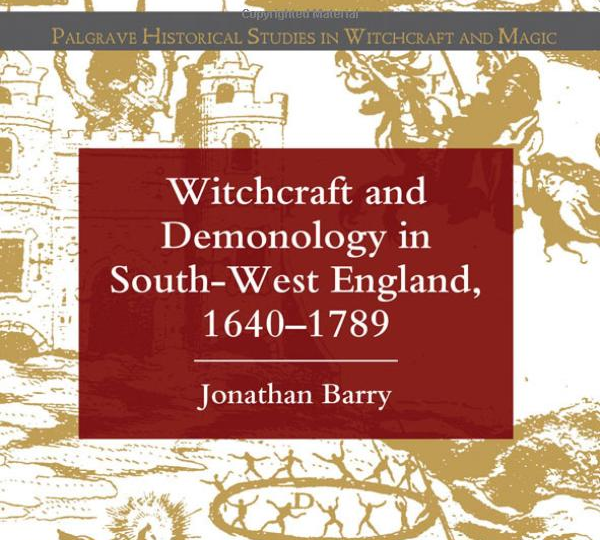Review: Barry, Witchcraft and Demonology July 17, 2013
Author: Beach Combing | in : Modern , trackbackWitchcraft is extraordinarily popular in history faculties: there can be few first grade universities that don’t offer either a course on witchcraft or a course that has a witchcraft component. But caveat emptor, actually most of these courses are not about witchcraft, but about the witch hunt, in which tens of thousands of men and women were judicially murdered by medieval-style judges, juries and inquisitors. Only, of course, they weren’t ‘medieval’… Most of the witch killings took place after the sun had set on the Middle Ages, i.e. post 1500. In fact, in the long search for the reasons behind the witch craze there is the suspicion that the killings had something to do with the economic, cultural and social shift from a medieval to an early modern mind-set: it was as if the patient was sweating out a transitory fever. The two most important questions in witch-craze studies are or should be involved are: (i) why were the witches persecuted in the early modern period, whereas they had not been before; and (ii) did, in some cases, these persecuted men and women believe themselves to be witches (or to have supernatural powers)? These two questions would seem to depend on each other and yet, in fact, scholars are far keener to answer the first than the second: many, in fact, have simply decided that the second question is not an issue, something which has hopelessly distorted the historiography. We are back to an interest in witch killing as opposed to witchcraft proper (should such a thing exist).
Even this potted introductory paragraph with its contradictions and partial paradoxes will give some sense of what a curious world witchcraft scholars inhabit. Indeed, many are rather curious individuals, and books and studies on witchcraft are of variable quality: the greatest vice of witch historians is to get lost in, at worst, a futile, at best, a semi-detached theoretical excursus. It is with great pleasure, then, that Beach offers up an outstanding study on witchcraft and witchcraft history from Jonathan Barry, Witchcraft and Demonology in South-West England, 1640-1789 (Palgrave Macmillan 2012). JB belongs, for those who don’t know his name, to the greenest and most giving branch of post-war British history. His tutor was Keith Thomas and that puts him, in terms of academic genealogy, in direct line of descent to Christopher Hill, the innovative and surprisingly undogmatic Marxist historian who rewrote the English Civil War. In JB’s studies we are a long way from the creative excesses of Hill and even the broad-strokes of Thomas, but there is no question that JB belongs to the same tradition. Clear prose, a gift for flying close to evidence without crashing the helicopter, a refusal to treat our ancestors as idiots, unpretentiousness matched with rigour, a well-judged balance between thinking and practice… This particular book is a study of six different micro-histories from south-western England ranging from the Somerset witch trials of 1658 to John Beaumont’s mystical journey through fairies, spirits and daemons to a better life (perhaps Beach’s favourite chapter).
The beauty of the period that JB has chosen is that witch belief is falling apart and as the seams start to pop so the subject becomes more unpredictable and so more curious. There is not only a crisis of belief, but a harvest of colourful, flowering weeds for the witchcraft tenets of one generation are being examined, prodded, rejected and adapted by increasingly modern audiences: the last chapter is full of Methodists! What Beach perhaps likes best about JB’s studies is the way that rather than getting all high-faluting about this or that witch incident and tying it into continental parallels or anthropological studies relating to Sub-Saharan Africa (which can get tiring after a while) he chases every last local detail down. When was this pamphlet published? Had the author slept with the publisher’s daughter? What was the publisher’s daughter’s bra size? Did either publisher or author have pretensions to a scutcheon? If so which gentry families were they allied to? What side had said families fought on in the Civil War? Put like this his endeavours might seem dry-as-dust. But it works for two reasons. First, because the reader feels like that they are part of the hunt for information: JB would write a good detective story. And, second, because JB’s obsession with details turns up results. An image that returned again and again to this blogger was that of a nocturnal entomologist blowing a luminious dye onto a spider web in the dark: slowly the different strands light up and the invisible structures which explains the fire-flies’ death dance become visible. Note that most continental practisioners of micro-history – particularly its originators in Italy, Levy and Ginsburg – are not, perhaps surprisingly, detail scholars: some similar cow pats could be thrown at their French annales cousins. They suck out the material that interests them and, then, all too often don’t do the spadework that could get them more solid results. JB, for this blogger at least, represents a peculiarly Anglo-Saxon version of micro-history: well-grounded foundations, attention to detail, and a nagging suspicion that there is no bigger picture. Prof Barry is so busy, in fact, with his spade that he has long since disappeared into the hole of his own making. Probably only a historian would write this and mean it as a compliment…
A perfect counterpoise to Emma Wilby’s book reviewed in this place earlier in the year. It is good to think that the UK is capable of producing both: being in the room with these two would be fun.
Other exceptional books on witchcraft? drbeachcombing AT yahoo DOT com



